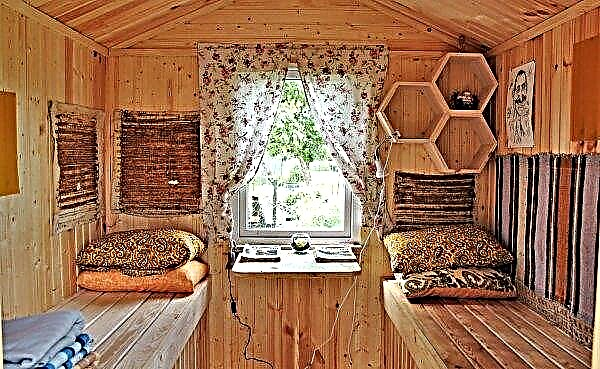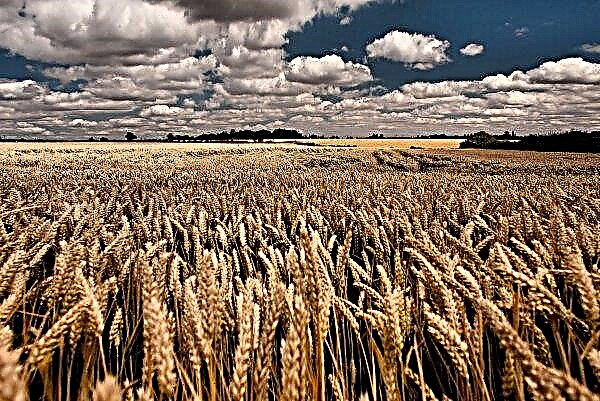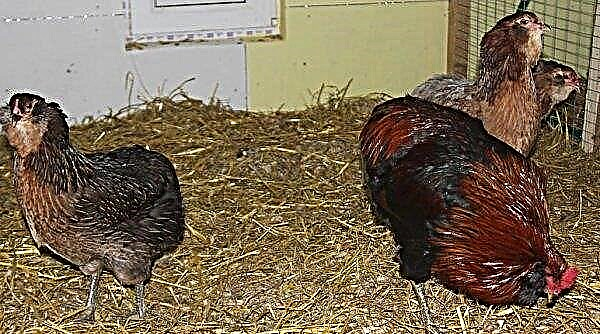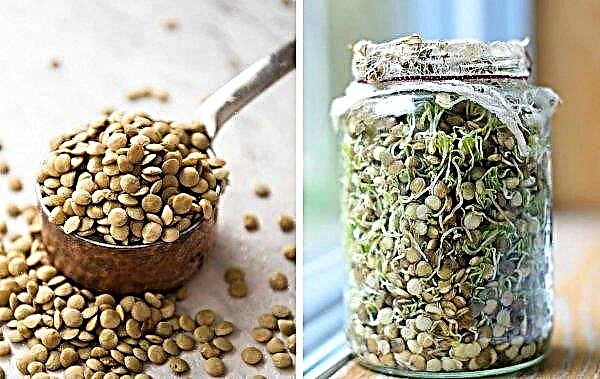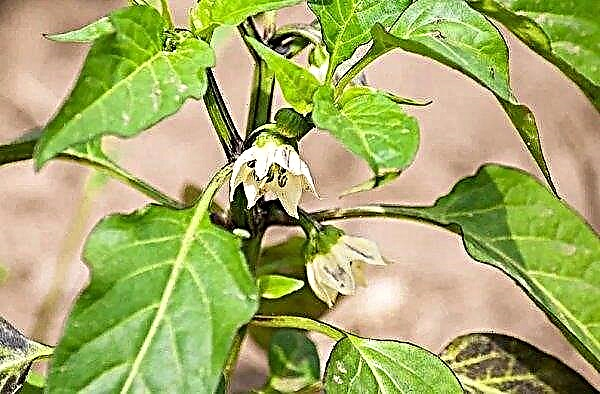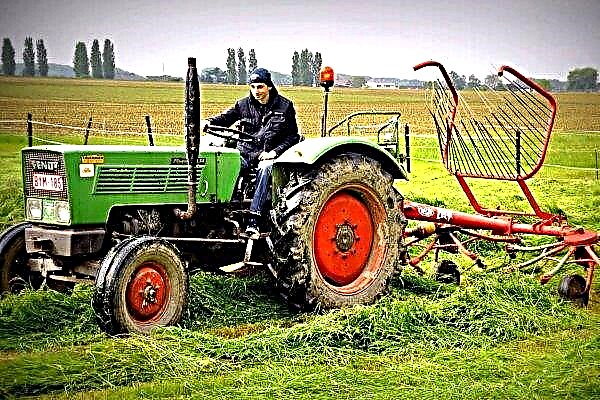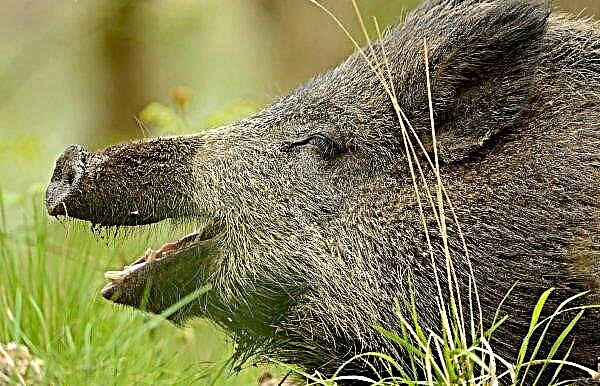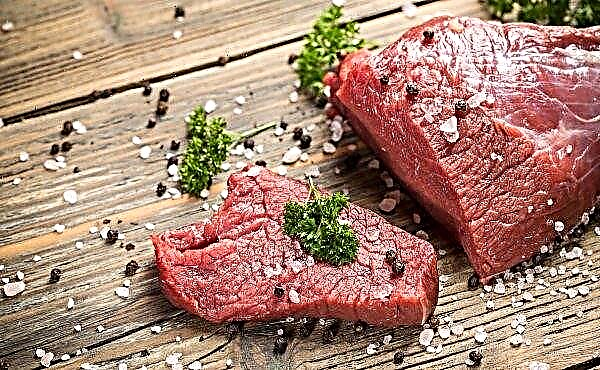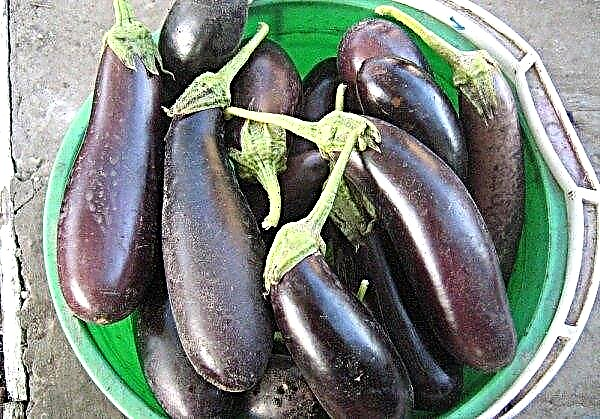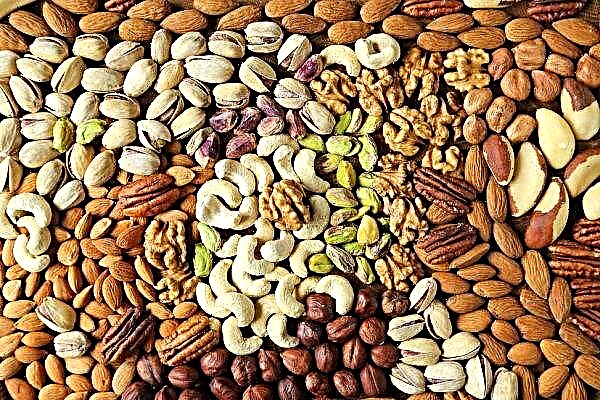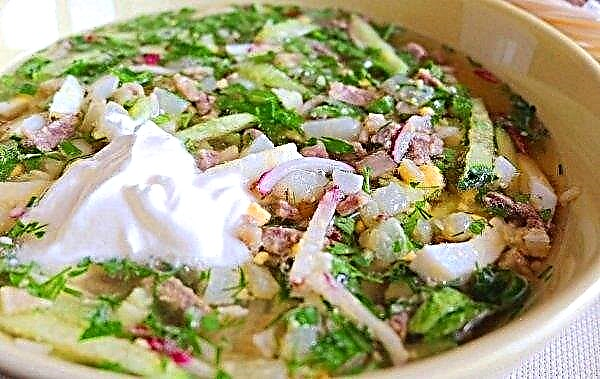Tree-like shrubs in gardening occupy one of the leading places in popularity. One of the hydrangeas demanded among these crops is unpretentious in care, conditions and a beautiful, long-flowering plant.
View description
A tree-like variety is a low tree or shrub from 1 m to 3 m in height. The crown is usually rounded, formed by strong, flexible green shoots. Unlike other species, its branches have a margin. The root system is superficial, like in other species, is growing rapidly. Foliage of medium and large sizes in the shape of a heart with a pointed end or obovate. On the upper side are numerous veins that are lighter than the main background of the sheet.
The flowering of the species is long, plentiful with proper care. Inflorescences look like a dome, hemisphere, or has a corymbose shape. Sterile white or pink flowers up to 2 cm in diameter, inflorescences 15–20 cm. Depending on the variety, the buds bloom in June-July, and fade in September-October.
Popular varieties
Tree culture is one of the most common in Russian gardens. The plant adapts well to climate, temperature changes and pleases the eye with long flowering. Planted next to several varieties with different timing of the appearance of inflorescences create the effect of a continuously blooming garden. There are several particularly popular varieties.
Did you know? In the temples of the Japanese city of Kamakura, there are more than 2500 species and varieties of hydrangea. Tourists from all over the world come here to enjoy the mass flowering of culture.
Lime ricky
Compact shrub, grows to 1.2 m. Its flexible shoots, resist wind gusts or heavy rain, do not bend or break. A flowering period adorns Lime Ricky bush with dense, large up to 25 cm long inflorescences in the shape of a dome. The petals are first of a gentle lime hue, from where the name of the variety comes from, and then they turn white. The culture develops well in a semi-shady area with drained, moist soil. The soil may be neutral or acidic. The winter hardiness of Lime Rickey is high; it tolerates temperatures of –34 ° C.

Hills of snow
Large shrub up to 1.5 m high, with a rounded crown. Strong shoots, capable of bearing heavy inflorescences up to 15 cm in diameter. The name of the Hills of Snow variety is translated from English as “snow hills”. During flowering, from July to September inclusive, the bush is covered with greenish-white baskets up to 1.5 cm in diameter, collected in hemispherical inflorescences resembling hills. At their peak, the petals become dazzling white.
Hills of Snow does not like drought, but is more tolerant of the sun than other varieties. Prefers to grow on moist soils with good drainage. Requires protection against gusty winds. Given the rapid growth (20 cm per year), the florist needs attention to maintain the shape of the crown. It has high resistance to low temperatures up to –39 ° С.

White ball
Shrub reaches 1.5 m in height. Light green shoots grow unevenly, forming a round, slightly torn crown shape. White Bol foliage is green with veins and a sharp end to the plate.
According to the description, flowering can last until late autumn, and begins in June. Beautiful, densely packed inflorescences in diameter reach 25 cm. White Ball flowers with snow-white petals bloom both on last year's shoots and on the branches of the current season. It is recommended to plant the variety in sunny areas with shading at noon. Soil preferably with a slightly acidic reaction, moistened, drained.

Annabelle
A tree up to 1.5 m tall and 3 m in diameter of the crown. Stems without edges, sprawling, gray-green color. Large foliage, up to 15 cm in length, emerald color. Bright shade persists until late autumn. In June, the domed crown is covered with large up to 25 cm circumference of inflorescences. They are formed by sterile white-colored flower baskets.
Variety subtypes:
- Annabelle Strong - inflorescences are white with a pale green tint, up to 30 cm in diameter;
- Annabelle Pink - petals from a pale pink tint to a bright pink tone.
 The flowering period lasts until September. The plant is frost-resistant, but needs shelter from the wind. It is better to grow a variety in partial shade.
The flowering period lasts until September. The plant is frost-resistant, but needs shelter from the wind. It is better to grow a variety in partial shade.
Sterilis
Sterilis is one of the relatively new varieties of the species, the height of the bush is 1.2 m, the crown width is 1.5 m. It differs in the rapid growth of shoots, 20 cm per season. The foliage is long, up to 20 cm, the surface is green, the underside of the plate is bluish. The edges of the sheet are framed by small teeth. Blossoms culture from July to October, hemispherical, dense inflorescences.
Important! For winter, shelter is desirable, since this variety has a low winter hardiness.
The petals are painted in a pale green tone, they whiten as they develop. Inflorescences are formed by sterile baskets. Landing on fertile, loose soils with a good layer of drainage is recommended. The plot is closed from the draft, sunny with shading at noon.

Outdoor landing
Ornamental plant is one of the most unpretentious of flowering shrubs. Hydrangea can grow on almost any soil. The culture grows in partial shade and in sunny areas. However, for abundant and bright flowering, it is still desirable to take into account its preferences in conditions.

When to plant
In regions with early winters, hydrangea is best planted in late summer. Before frost, the seedling will have time to take root. In the central and southern regions, spring planting is recommended when the soil warms up to + 8 ° С. In mid-late April there is no longer a threat of freezing frosts, nothing threatens the young plant in the open ground.
Seat selection
A correctly selected site is half the success. Ideal conditions for the development of hydrangea are bright lighting in the morning and evening, a slight shadow in the hours of solar activity. When grown in a constant shadow, the inflorescences will be loose, the plant will quickly fade. Sunny places are great, but at noon the aggressive sun will burn delicate petals and foliage. Given the root system located close to the soil surface, the culture needs protection from gusty winds, especially at a young age.
Important! Seedlings that do not have time to grow roots can be torn out by a strong gust of wind.
Sapling and soil preparation
Before planting, you need to prepare a seedling:
- Check and remove weak, broken roots.
- Make sure that the root shoots are almost the same length, too outstanding to shorten.
- Support the bush in a solution of “Heteroauxin” for 24 hours (2 tablets per 10 liters of water). Do not pour out the solution after use (see below).
After digging a landing hole, the earth extracted from it is mixed with humus, compost and river sand in a ratio of 2: 2: 1: 0.5. The size of the pit is regulated by the volume of the root system.

Disembarkation process
After preparing the bush, once again inspect its roots for damage.
Landing technology:
- At the bottom of the pit, drainage is made of gravel or pebbles, broken brick. The layer is about 10 cm.
- A hill is poured on top, slightly higher than the length of the roots.
- They place the plant, straighten the root shoots and sprinkle with prepared soil.
- When adding soil, it must be tamped to prevent voids.
- The root neck remains above the surface 7-10 cm higher.
- Freshly planted plants are watered with a bucket of water and a solution in which the roots are soaked.

Care
Growing hydrangea is not difficult if you follow the rules of care. Its Latin name "hydrangea" speaks of the love of culture for moisture. Many varieties have the ability to quickly grow young shoots. Therefore, it is important to monitor rejuvenation and the contour of the form in time. The purity of the near-trunk circle will serve as a prophylaxis of diseases, the carriers of which can be weeds and pests attracted by dense greens.
Did you know? In Japan, hydrangea is one of the floral symbols that embodies pride and, at the same time, indecision.
Watering and feeding
Watering in the first months after planting is often carried out, the condition of the soil serves as a guide. It should be moist to a depth of 20 cm. As the bush grows older, it needs to be watered once a week, with frequent rainfall once a month. An adult plant needs up to 20 liters of water. It must be separated from the impurities of the water supply system. In the spring, as soon as the snow has melted, the juices have not yet begun to move, the culture is fed organic. It responds well to mullein solution. The fertilizer infusion is diluted with water 1:15, under the bush they spend up to 20 liters.
During the formation of hydrangea buds, complex mineral compositions are used, for example, Fertika. The preparation is granular, it is used in dry form: 50 g are embedded in moistened soil in the trunk circle. In late July, this top dressing can be repeated. The last time this season is fertilized at the end of August. The tree trunk circle is properly watered and sealed in the soil with 50 g of superphosphate and potassium salt.

Mulching and loosening the earth
Roots need oxygen for the development and course of vital processes. Deep penetration provides loosening of the soil. In addition, the procedure helps to penetrate deep into the soil with moisture and nutrients. Together with loosening, weeding is carried out, cleaning the soil from harmful herbs. After watering and loosening, it is recommended to cover the tree trunk circle with mulch: tree bark, sawdust, peat. Mulching helps preserve moisture and also protects young plants from overheating.

Trimming and Shaping
You need to take care of the crown annually. Most varieties have fast growing power. In the spring, they inspect the bush for frozen branches, broken under the weight of snow. Such instances must be removed on the ring. To rejuvenate the bush, last year's strong shoots are shortened by 2-3 buds, branches of 2-3 years - by 4-5 buds. Crops do not need to be thrown away: they are used to breed crops.
To maintain the shape of the tree, the crowns growing inside are removed, which interfere with the growth of fruiting promising branches and weak shoots. If necessary, shorten instances that are knocked out of the general contour.

Winter insulation
In regions with severe winters, hydrangea needs shelter. The trunk circle is covered with a layer of mulch up to 25 cm, and the spruce is placed on top. Stakes are driven around the bush. A wire is attached to them, on which a covering material is pulled. If winter has stood out with heavy snowfalls, regularly clean the snow from the bush so that it does not break branches with its weight.

Breeding methods
Propagation of hydrangea in the culture is carried out vegetatively. Convenient and quick options are cuttings, division and layering method.
The seed method is not suitable for a couple of reasons:
- firstly, the flowers of most cultivars are sterile, that is, they do not provide a complete seed;
- secondly, this method is time-consuming, and the grown plant will begin to bloom only after 5-6 years.
 Propagate by seeds are taken only by professionals in floriculture, to breed new varieties.
Propagate by seeds are taken only by professionals in floriculture, to breed new varieties.
Cuttings
Cuttings are harvested from green shoots in June or July. A branch of a branch should be with a “heel” - a piece of bark. The shoot should also have 2 pairs of leaves and developed internodes. Material length - up to 12 cm.
Rooting Scheme:
- A cut of the handle is soaked in “Heteroauxin” for 12 hours
- Planted in a greenhouse in moist soil (as for a seedling). At the same time, they are deepened to the middle of the lower internode.
- Cover with a cropped plastic bottle.
- Every 2-3 days, aerate, remove condensate and water the soil. It must always be moisturized.
- For 30 days, the stalk grows small roots. Rooted shoots can be planted in open ground next year.

Propagation by layering
For layering, select the longest branch at the bottom of the bush. In spring, perform the following actions:
- Dig a furrow up to 4–5 cm deep under the lay.
- Put part of the shoot, stripped from the leaves. Its tip remains above the surface of the soil.
- Fasten layering with brackets and sprinkle with soil.
- Leaving is like an adult bush. If the soil sags in the furrow, add fresh to its original state.
- Separation from the mother bush and transplant layering is carried out next spring.
Dividing the bush
The old hydrangea bush for rejuvenation is divided into several parts, which also allows you to propagate the culture. The dividends are transplanted in the spring, before the sap flow begins.
Method Description:
- The donor bush is dug out of the ground, neatly divided into parts.
- Each split has its own root system, shoots and foliage.
- Planting is carried out according to the rules described above for a seedling.
- Care is the same as for an adult copy.

Diseases and Pests
Trees hydrangea rarely agrees with agrotechnics, insects are also not particularly concerned about it.
However, the florist will not hurt to know "in person" a possible enemy and measures to combat him:
- Downy mildew leaves a white, fleecy coating on the foliage, which later turns yellow and rot. Rust is recognized by brown spots, gradually leading to necrosis. The method of treatment is spraying with a Bordeaux mixture of 3%, twice with an interval of 10 days.
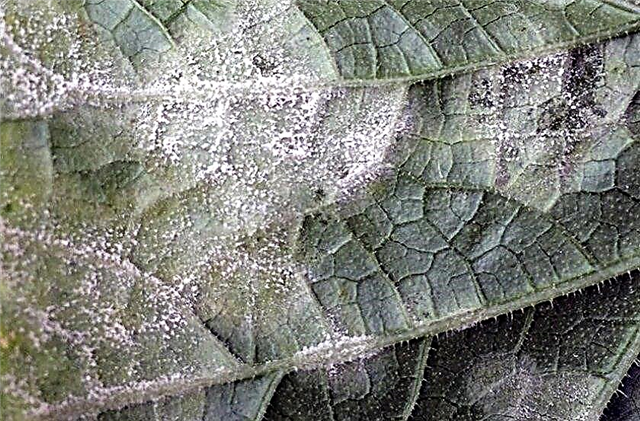
- Chlorosis. The foliage turns yellow, but the veins remain green. The disease occurs due to a lack of iron, so they are treated with iron sulfate. A working solution for spraying is prepared in a proportion of 50 g per 10 liters of water.
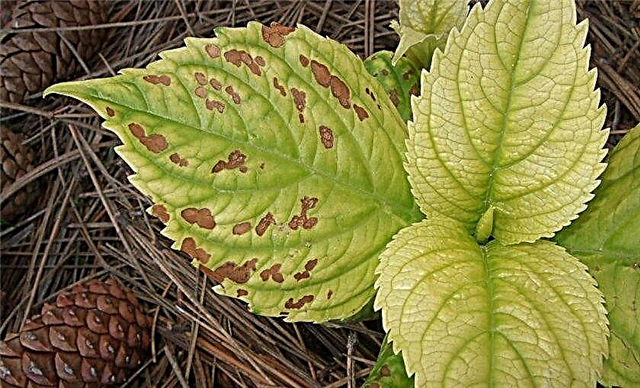
- Spider mite loves dryness. The presence of a thin web and black dots on the sheet indicates his attack. The drug "Actellik" is mixed with water 2 ml per 2 liters of water, sprayed on the ground part of the bush.

- Aphids, thrips. Insects are small, it is difficult to see them. Signs are folded leaves. Helps against pests "Akarin" 6-8 ml per 1 liter of water, spray the bush.

Treelike hydrangea varieties are not in vain successful and are subject to selection. These plants adapt well to the proposed conditions, are frost-resistant and bloom lushly for a long time.





